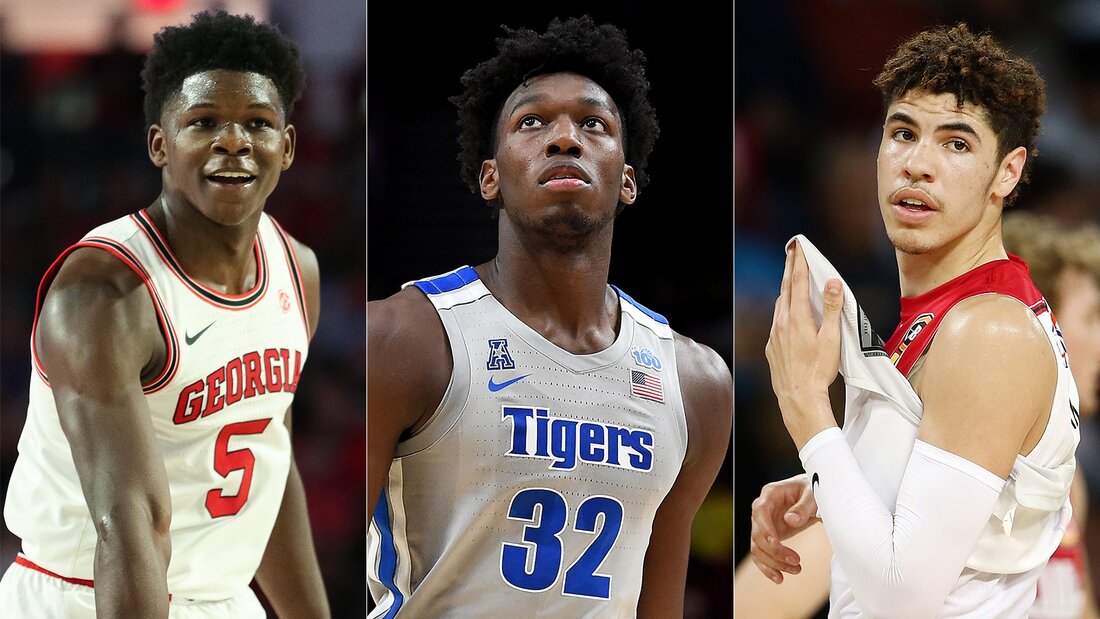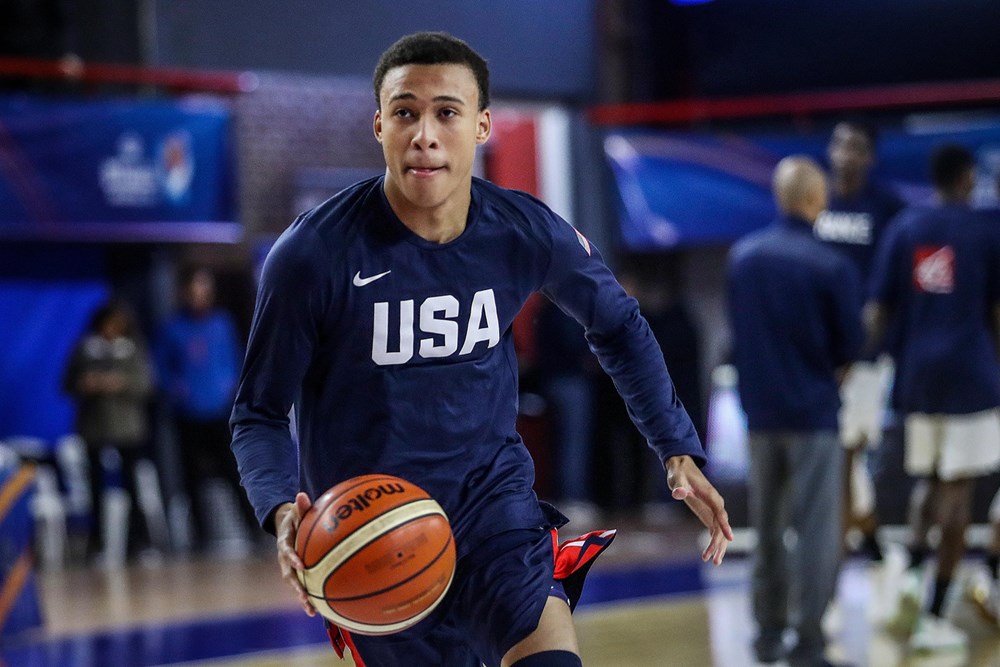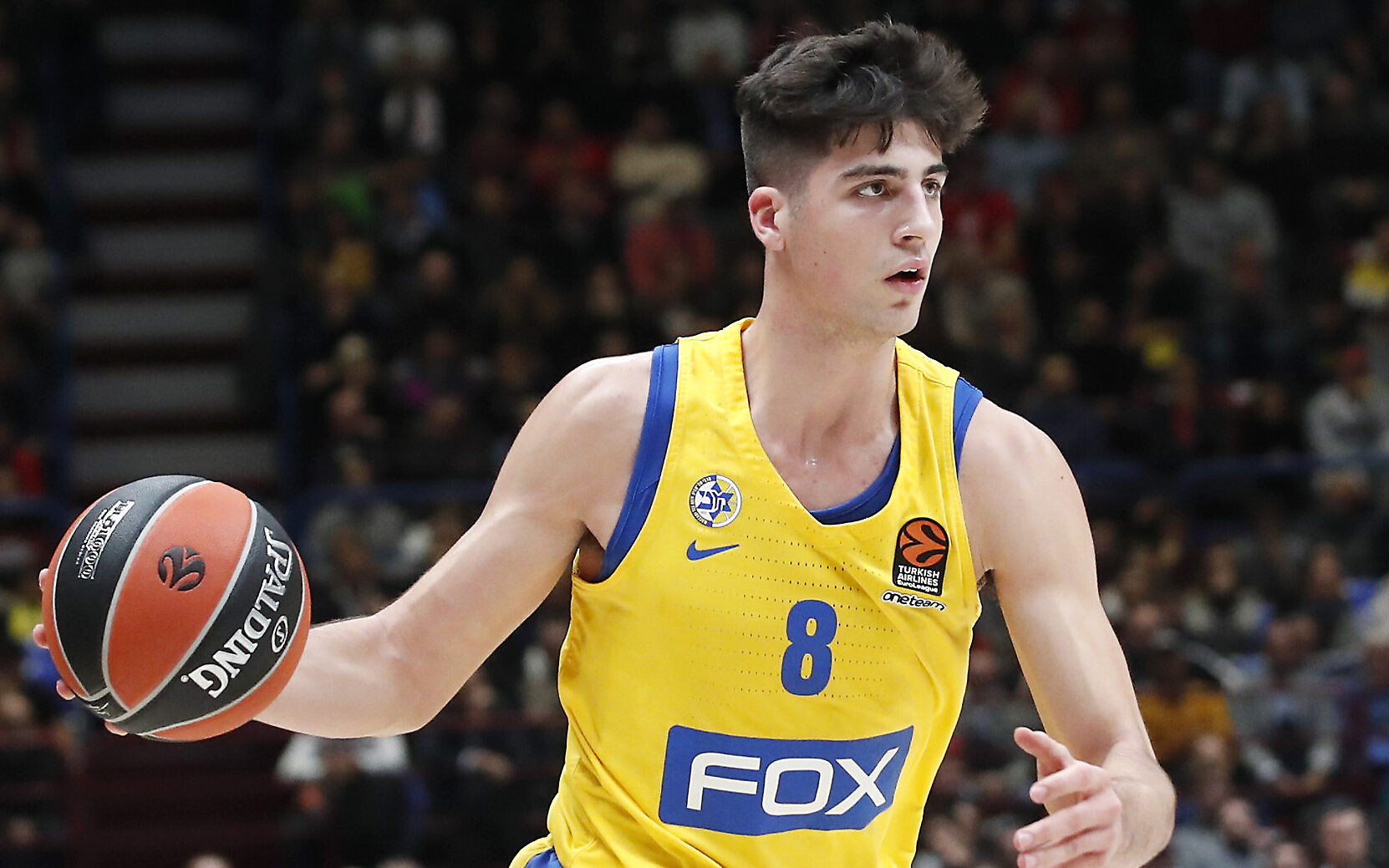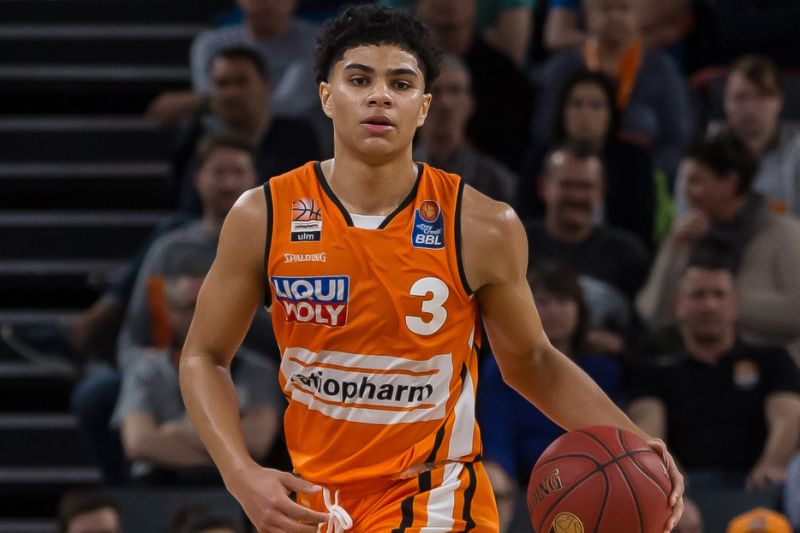|
Let's get one thing out of the way: draft grades are as subjective as The Oscars. There may be criteria which are considered, but selecting between the nominees comes down to personal interest and gut feeling. There's enough proof and video footage to slant arguments towards any path the arguer would choose. You're reading this to be lead down the path I'm staring at.
Instant reaction to the draft places players in situations where I either feel they'll succeed, fail or fall somewhere in the middle, not living up to their best potential. A Big Board is a listing of players whose styles, upside and apparent talent intrigue me most. A post-draft recap would look at the surroundings and see how those might change based on the roles they'll play with new teams, the track record of development around them and the blockage or commitment to minutes where they'd be wise. I'm all for being proven wrong, and generally am optimistic that every player is where they are for a reason. Only a handful of teams scored poor grades on draft night; the real answer for all 30 teams is "incomplete", as these are instant-reaction, way-too-soon judgments that writers get suckered into writing. As much as I try to stay above the fold, I can't help myself but to shake the crystal ball and believe I can see the writing more clearly than someone else. Hubris is not short in that regard. Before going into the subjective rankings, I thought a fun project would be to look at the total overall grades from a statistical perspective: where the player was ranked in my Top 100 vs. their draft position. The difference (either positive or negative) would lead to each team getting a "net grade", then listing them in order of best to worst.
0 Comments
We're about 10 days away from the NBA Draft, and I'm ready to remove myself from overthinking, pull away from consensus and set my big board. It's been a one-of-a-kind scouting year, with nearly five months tacked onto the pre-draft process thanks to a global pandemic. The extra time has afforded scouts time to dive deeper into more prospects and get a clear view of the whole field. It's also afforded them the opportunity to over-fixate on certain details.
Some prospects have blossomed with the time off, rising their stock. Guys like RJ Hampton (working on his jump shot), Tyrell Terry (seeing massive weight gain and improving his body) or Den Avdija (playing in Israel and quelling some doubts about his shooting) have used the summer productively and could see boosts in their draft stock. There's been need for flexibility and re-visiting the prospects throughout. But ten days before the draft, it's time to set our final big board. 100 Players and over 130 video scouting reports later, we're ready to fit our Top 100 in a large, all-encompassing piece below. Before we dive in, a few reminders about what this big board really is and is not. This is, by our estimation, a calculation of the upside, downside and an averaging of the likelihood of hitting either. This is not a look at which players should, or will, be taken in what order. This version of the big board, our last, traditionally breaks hardest from consensus and puts players in the spots we believe they'll settle into. It's a look at, when all is said and done, who will have the best careers from this class. There are ten tiers, with played labeled in order from tier to overall rank. So "3.8" means third overall tier, eighth overall on the big board. For a complete look at articles and videos on these prospects, please check out the Spreadsheet version of our Big Board. We all witnessed the Miami Heat making an improbably run through the NBA Playoffs, thanks in large part to the ascent of youngsters Bam Adebayo and Tyler Herro. Out west, the Denver Nuggets made similar strides when Jamal Murray took the leap from good to great. Devin Booker lofted the Phoenix Suns to an 8-0 record inside the bubble.
None of the four were expected to play these roles when in college. Adebayo was a pure energy big without predicted ball skills. The other three were shooting specialists and their self-creation has been a surprise to many. A common thread between all four–spending their college years under John Calipari at the University of Kentucky–has led to a common question in draft circles: who is the next Kentucky prospect that will deliver the same loot? The question is, safe to say, a little too narrow. Sure, recent history shows Kentucky guys fit this mold more than others. They play on super-talented teams with multiple professional prospects, forced to sacrifice showcasing some individual skills to make all the pieces mesh on the floor. Shooters, like Booker or Herro, don’t have the ball in their hands, not because they aren’t efficient there, but because it’s not the role their coach needs them to play in order to win. Countless other prospects explode in the pros when freed of the shackles of their collegiate system. Malcolm Brogdon averaged 16 and 7 for the Indiana Pacers this year after playing in Virginia’s massively-restricting offense. Caris LeVert has proven a great late-clock option, something he wasn’t asked to be at Michigan. The question is Kentucky-centric due to our collective understanding of the context prospects find themselves in there, but it’s not unique to just the Wildcats. Enter RJ Hampton. The newest version of the Box and One NBA Mock Draft is now live! It includes latest intel on players, rumors from trusted sources and quick video previews of each pick, featuring the draft breakdowns we do on our YouTube channel. The video below includes picks 1-14 in the lottery. To see the rest of the draft, please click here for picks 15 thru 60. Be sure to like, comment or subscribe! Part two of the breakdown of best shooters continues with simple catch-and-shoot. This is stationary shooting: darting off screens wasn't heavily considered in making this list. Small relocations and finding pockets laterally along the 3-point line were important, but the main skill in question is shooter's accuracy when their body is already set to the hoop. Shooting is a mercenary skill in the modern NBA as well as a vital one. Specialists are in demand more than ever, while every role player is asked to develop this aspect of their game. An elite shooter can mean the world for an offense (just ask Duncan Robinson and the Miami Heat). Finding that type of production is rare, though we'll certainly see an uptick in teams trying to find their own version of Duncan Robinson. Our skill category rankings continue with part one of our breakdowns of the best shooters in this draft class. To me, shooting efficacy needs to be broken down into two different realms. Catch-and-shoot and movement. Both require different strengths, different form and can't be evaluated the same. Some players have great muscle memory for stationary shooting, but don't have the hip fluidity or proper footwork to be used off screens. Evaluation of the players on this list include those traits, as well as the effectiveness of their makes in this area. Movement shooters become elite when their movements create gravity for teammates, so there's certainly importance to this area beyond simply making shots. We'll carry on with our skill category breakdowns by diving into some of the best pick and pop bigs in this year's draft class. Modern floor spacing requires some bigs to shoot, and most big men drafted will be role player as opposed to franchise focal points. Possessing the ability to be a supporting cast member means doing some specific things really well, like shooting the ball from deep. For this list, we focused more on bigs who are involved in pick-and-pops as opposed to wings or guards. While many NBA teams use screens from different types of players, college teams do so with less frequency. Add onto that the fact most NBA teams will switch guard-to-guard actions and there's less room for pick-and-pops unless you're screening for an elite scorer. The draft is about finding fits within the modern game and in areas that influence winning. Most players aren't going to be All-Stars or franchise foundations that an offense is built around. Pick-and-pops matter because floor spacing, knocking down shots and being functional next to a star player is what earns minutes and carves out roles. We're seeing pick-and-pop bigs find themselves more secure than ever on NBA rosters. Focus on a few areas of functionality in the video above:
During the 2019-20 regular season, there were 77 players to average at least 30 minutes per game. 45 of them were guards or wings who spent at least 20% of the time in the pick-and-roll. Of those 45, 30 shot at least 35% from 3-point range -- two-thirds of all high-volume pick-and-roll players. Essentially, in the modern NBA, guards shoot it. Typically that brings extra attention when they come off screens from hedging defenders, seeking to prevent such a now-mundane shot and force a play elsewhere. When that happens, the first look that's typically open is a quick pocket pass to the screener. As such, screening bigs need to be actively helping their team in the short roll and strong playmakers in those quick 4-on-3 advantages. It's a skill more in-demand than ever, and one that can expand a big man's role quickly. Who in this draft class are among the best short roll playmakers? We decided to start small rankings list on some of the more important skills that prospects can possess, and break down what evidence is available to lead to this conclusion. Most lists are difficult to generate, with multiple eligible players, but the tiebreaker always goes to which players were most able to demonstrate the skill in college. We started with playmaking off the short roll: In this first iteration, there's a solid point worth noting: playmaking is different than passing, but the two are definitively linked. Playmaking can include passing and scoring, making it more expansive. Our theory is that in order to be respected as a passer and have open reads, teams must first decide to guard you -- they only do that if there's a threat to score.
In most clips above, you'll see a few scoring clips from guys coming off a limited bounce or two, as those show a player's upside to catch in the mid-range, take a dribble and finish if the rim is unoccupied. In short roll situations, one defender sliding in to protect the rim is what opens up the passing. We'll continue with small videos like these in the coming weeks leading up to the draft. Hopefully they illuminate some functional skills and get you thinking about prospects in different ways. I'm not typically big on player comparisons. I've been vocal on opposing the tactic because, no matter how much you say you're comparing apples to oranges, someone else will see it as apples to apples.
Comparisons really fall into three categories: play style, player impact and physical similarities. For example, Lauri Markkanen was likened during the pre-draft process with Ryan Anderson and Nikola Mirotic, two stretch-forwards who will fill a similar role or style to Markkanen. But in doing so, the comparisons identified an inherent ceiling that Markkanen was perceived to have: that he'd be little more than a stretch big and might have shortcomings of how he impacts the game akin to Anderson and Mirotic. Others are lumped into categories based on the statistical impact they had in college and get put against the mold of a player with similar stats but drastically different style. Take Marvin Bagley from Duke, a hyper-athletic mismatch frontcourt guy. He saw comparisons to Chris Bosh (likely since both are left-handed) despite Bosh being a fantastic shooter, a master of fundamentals and someone who didn't rely on his athleticism. Some comparisons are pretty lazy and based solely on the physical characteristics. Jonathan Isaac, for example, as a long-armed and wiry 6'10", was given the Kevin Durant comparison despite the two playing polar opposite styles of basketball and having largely differing impacts. Jordan Clarkson, as a bigger guard, received comparisons to Michael Carter-Williams. Clarkson is one of the better scoring reserves in the NBA and shoots 36.8 percent from deep. Not exactly an accurate comparison. By this point, some of my not-so-subtle opinions about the draft and prospects in general are coming to the surface.
I'm a huge advocate for off-the-dribble shooting for ball handlers, and shooting in general being the most important offensive skill. I'd rather swing on a franchise-carrying scorer than a high-IQ playmaker or facilitator, or a role playing defender. Guards and wings are worth targeting earlier than bigs as a result. Speed isn't as important as change of pace, length is the great separator and nothing gets under my skin like lazy defensive effort. Killian Hayes is one of those strange prospect who absolutely checks some of those boxes but is completely absent from others. In trying to figure out how high to value what he offers and come to a conclusion on where he fits on a big board, Hayes tends to reveal something important about how to reconcile and sift through those differing attributes. |
AuthorAdam Spinella is a Division III basketball coach using what he's learned about scouting and skill development and applying it to the NBA Draft Archives
November 2020
Categories |




 RSS Feed
RSS Feed
